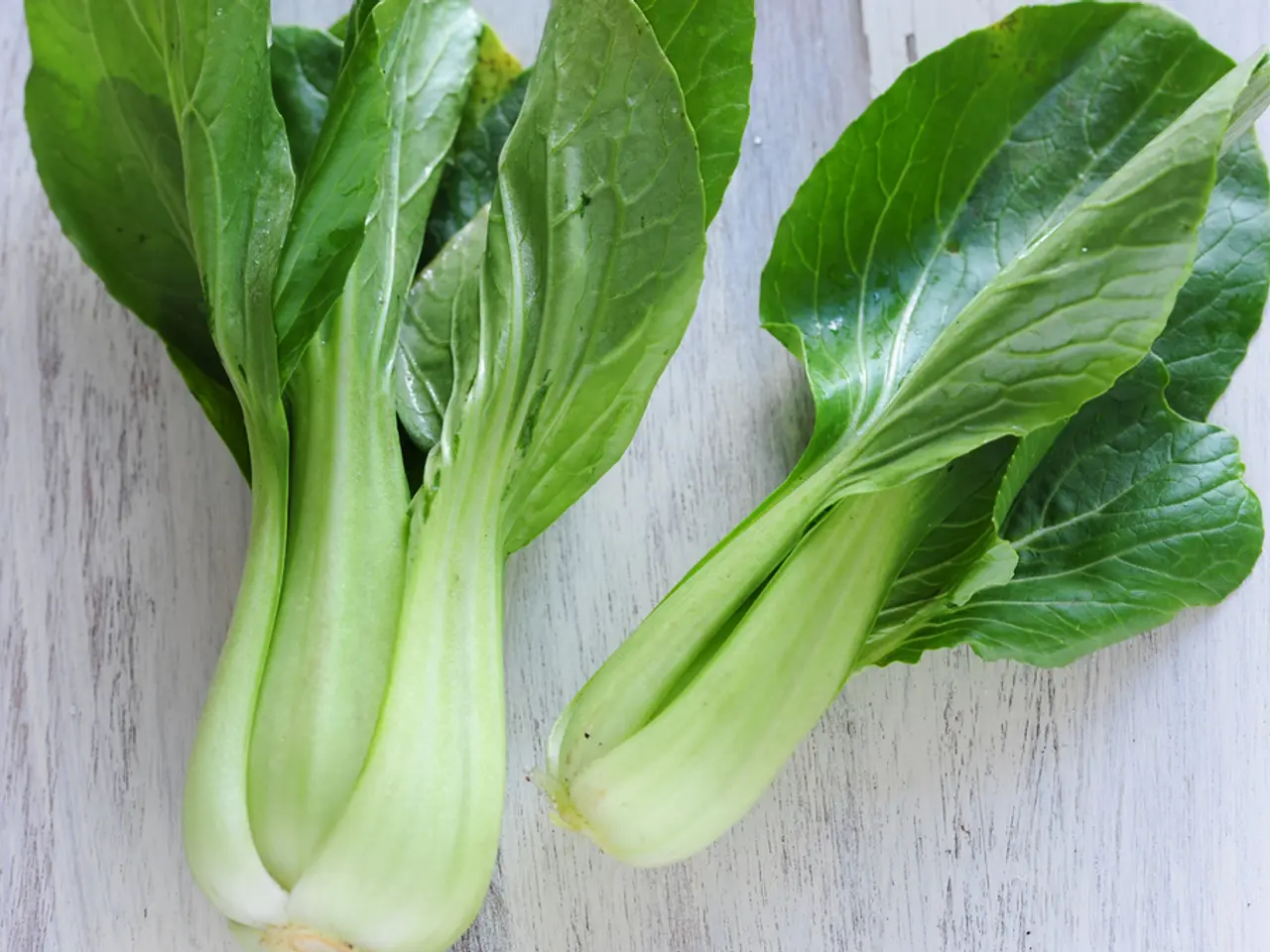Autumn harvest remains achievable for southern farmers with ongoing crop planting
Preparing Your Fall Vegetable Garden: A Guide to a Successful Harvest
As the summer comes to an end, it's time to gear up for a bountiful fall vegetable garden. Here's a guide to help you choose the right crops, plant them correctly, and care for them to ensure a productive harvest right up to the first frosts.
The Perfect Selection
For a fall harvest that extends until the first frosts, consider planting bush beans, radishes, beets, carrots, kale, Swiss chard, lettuce (heat-tolerant varieties), summer squash, cucumbers, and chicory. These crops mature quickly and are well-suited for cooler fall temperatures, with many actually improving in flavor after light frosts.
Planting and Care Requirements
- Bush Beans: Plant early in late July for a quick, successive harvest. Choose fast-maturing varieties like Contender, Topcrop, Blue Lake 274, or Provider that mature in 40–60 days. They prefer warm soil for quick germination. Succession planting every two weeks can extend the harvest window. Consider using row covers to protect from early frosts.
- Radishes: Ideal for late summer planting due to their very fast maturity (3–5 weeks). Varieties like French Breakfast, Cherry Belle, Daikon, or White Icicle tolerate warmer soil and produce flavorful roots in cooler weather. Sow seeds directly into well-prepared soil and water regularly.
- Beets: Sow seeds 8–12 weeks before the first frost for a mid-to-late fall harvest. Early maturing varieties include Early Wonder, Boltardy, and heirloom Chioggia. Beets need consistent moisture and perform best with some shelter (e.g., floating row covers) to maintain moisture and cooler soil in hot summer.
- Carrots: Similar to beets in timing and care. Sow seeds directly in cooler soil or provide microclimate improvements (shade or moisture retention). Choose faster maturing types suited for fall harvests and keep soil consistently moist for germination.
- Kale and Swiss Chard: Sow or transplant tougher greens in warm soil, favoring heat-tolerant varieties. They withstand some frost and can be continuously harvested by cutting outer leaves.
- Lettuce: Plant heat-tolerant varieties such as "Heatwave Blend" in slots cleared by harvesting early crops. Lettuce germinates quickly in warm soil but prefers cooler temperatures later, so watering and partial shade can help extend the season.
- Summer Squash and Cucumbers: Select very fast-maturing varieties (e.g., Early Prolific Straightneck Squash or Boston Pickling Cucumbers) planted in late July or early August to achieve harvest before frost. These crops are frost-sensitive, so protection like row covers may be needed near the end of the season.
- Chicory (Radicchio and Sugarloaf): Sow seeds in July into rows; baby leaves are harvestable in about a month, full heads in 80–100 days. It requires consistent watering and spacing of about 12 inches. Harvest heads before they become tough and cut just above ground level to encourage a second smaller head.
Additional Care Tips
- Use floating row covers or low tunnels to extend harvests by protecting plants from early frosts.
- Maintain consistent moisture, especially for root crops, during germination and growth.
- Succession planting ensures a continuous supply and maximizes harvest within the short fall window.
- Prepare soil by clearing space from summer crops that are ending their production to improve germination conditions in late summer.
Bonus Tips
- Don't discard radish greens as they are nutritious.
- Radishes require 30 days for express harvest, sown at 1.3 cm depth with a 2.5 cm space between each seed and a 5 cm gap between plants after germination.
- Even moisture is important for tender turnip tissues; excess nitrogen can negatively affect the greens.
- Turnips should be sown at 1.3 cm depth with a 5 cm space between each seed, then spaced at 10 cm.
- Successive sowings of radishes every two weeks provide a continuous supply.
- Hakurei type turnips can be eaten raw, being crisp and sweet.
- Lettuce should be resown every 10 days until August 7th for a harvest until October.
- Radishes prefer consistent moisture and can bolt if too dry or crack if too wet.
With the right selection, planting, and care, you're well on your way to enjoying a productive fall harvest. Happy gardening!
- A home-and-garden lifestyle emphasizing gardening in the fall involves selection of suitable crops like bush beans, radishes, beets, carrots, kale, Swiss chard, lettuce, summer squash, cucumbers, and chicory, as they mature quickly and are well-suited for cooler temperatures.
- To ensure a successful and extended fall harvest, consider incorporating methods such as succession planting, use of row covers, and maintaining consistent moisture, especially in root crops, into your home-and-garden lifestyle, since these practices have been shown to protect crops from early frosts and support healthy growth.




